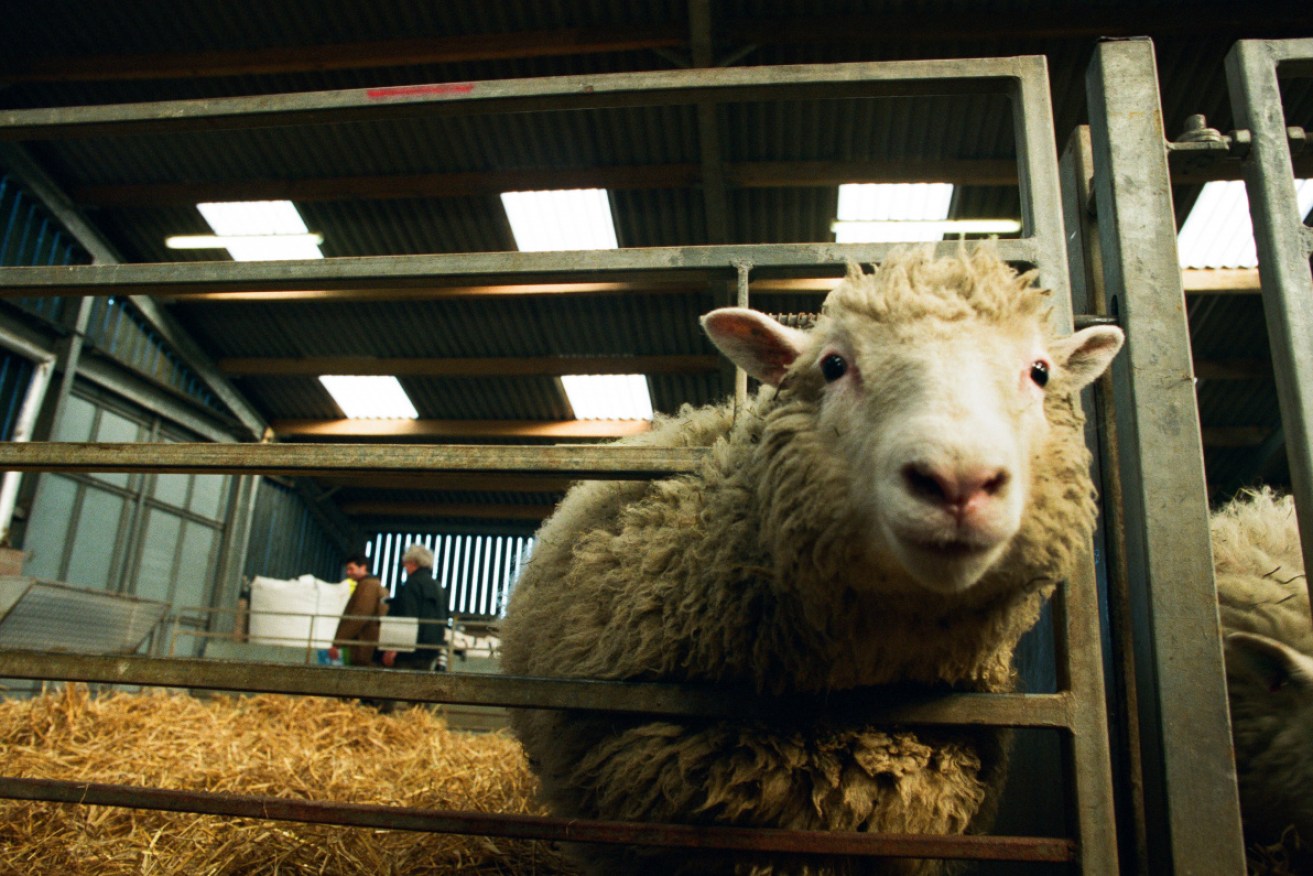On This Day: Scientists unveil Dolly the cloned sheep


Dolly, the first genetically copied sheep, at the Roslin Institute, UK. Photo: Getty
It’s a bold idea that has perplexed scientists around the world for centuries.
Is it possible to make genetic copies of individual cells, so that we can clone a living being?
On this day in 1997, that question was answered when Scottish scientists unveiled the first successfully cloned adult mammal, Dolly the sheep.
The scientists, from the Roslin Institute in Scotland, said Dolly was cloned using somatic cell nuclear transfer (SCNT) from the cell of a six-year-old ewe.

Dolly captured the imagination of people around the world. Photo: Getty
The cell nucleus, which controls gene expression and DNA cells, was taken from an adult cell and transferred into an unfertilised, developing egg cell that had its nucleus removed.

The team’s lead scientist Dr Ian Wilmut with Dolly the sheep. Photo: Getty
The cell was stimulated to divide by an electric shock implanted in the surrogate.
On July 5, 1996, Dolly was born to three mothers that provided an egg, donated DNA and carried the cloned embryo.
DNA tests revealed Dolly was identical to the donor and not related to the surrogate.
Originally code-named 6LL3, the sheep was named after American singer Dolly Parton because the donor cell was taken from a mammary gland.
Like all experiments that push the boundaries of nature, the announcement of Dolly the sheep sparked thorny debates among scientists.
These arguments became even more heated when she was euthanised in 2003 due to a progressive lung disease and severe arthritis.
Some scientists believe she died as a result of premature ageing.

Dolly was stuffed and mounted and resides at the National Museum of Scotland. Photo: Getty
Although the creation of Dolly stunned the world, she was not the first cloned animal.
The first study of cloning took place in 1885, when German scientist Hans Adolf Eduard Driesch began researching reproduction.
In 1902, he was able to create a set of twin salamanders by dividing an embryo into two separate, viable embryos, according to the Genetic Science Learning Centre.
Since then, there have been many breakthroughs in cloning.
In 1984, a sheep cloned from an embryo cell in Cambridge, UK became the first cloned mammal.
Two other sheep, Megan and Morag, were also cloned from embryonic cells grown in the same lab as Dolly in 1995.
What made Dolly so special was that she was been made from an adult cell, which no one at the time thought was possible.
Her birth proved that specialised cells could be used to create an exact copy of the animal they came from.
This knowledge changed what scientists thought was possible and opened many possibilities in biology and medicine, including the development of personalised stem cells known as iPS cells.
On Friday, US scientists announced they had successfully cloned an endangered black-footed ferret using frozen cells from a long-dead wild animal.
It was the first time any native endangered species has been cloned in the United States.








